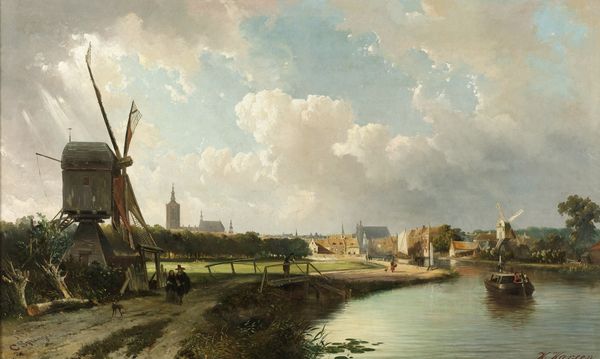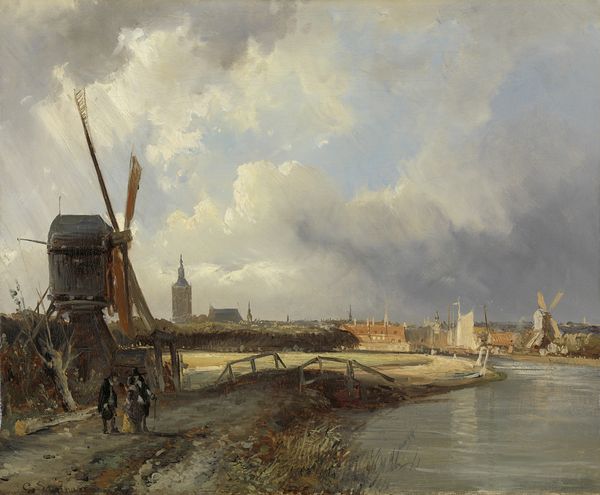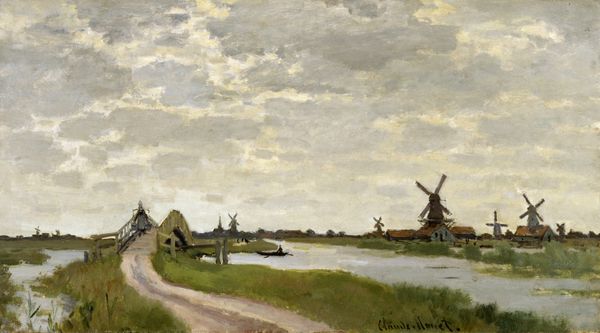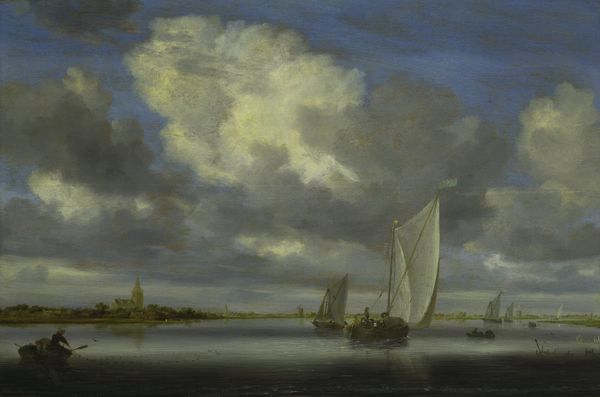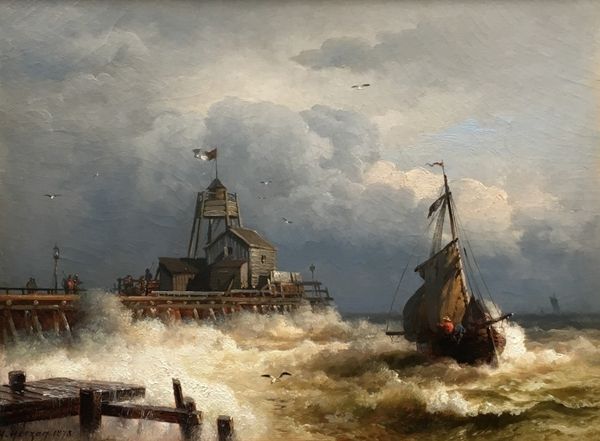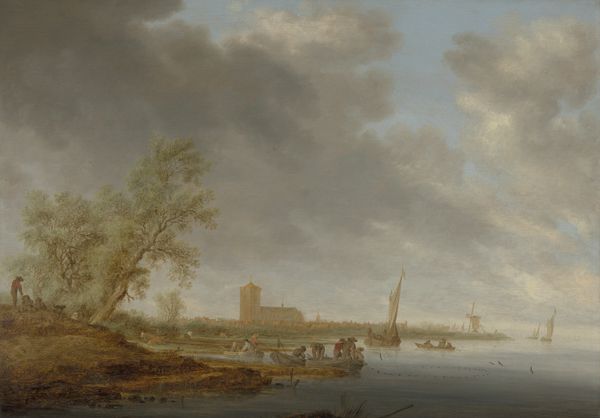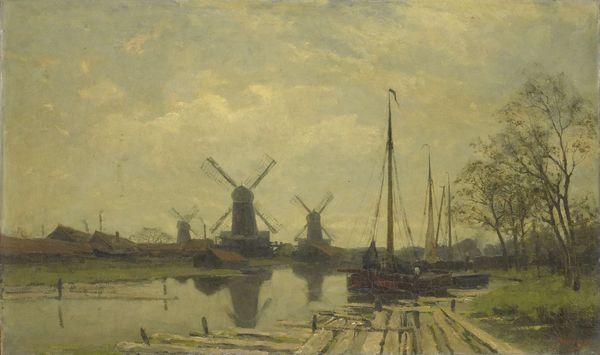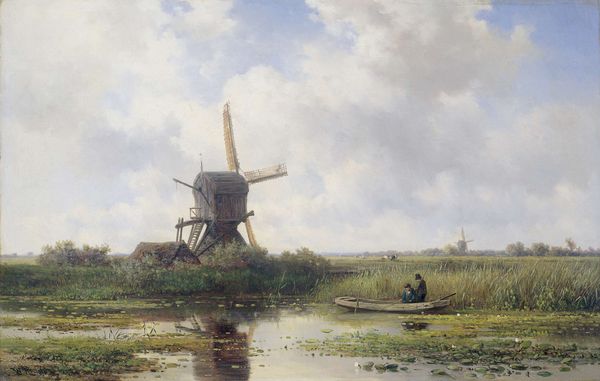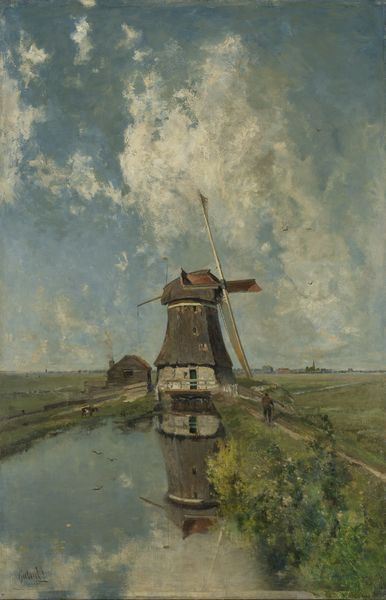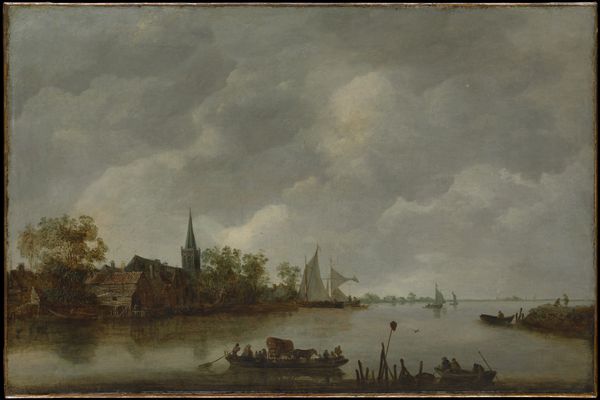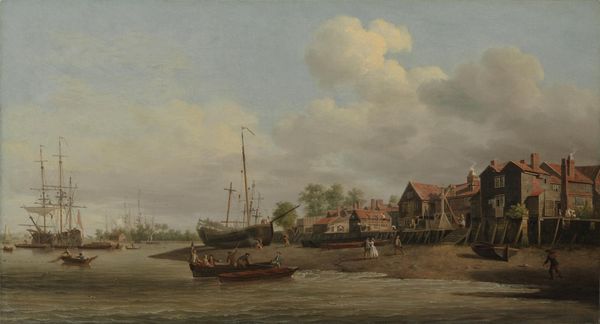
painting, oil-paint
#
dutch-golden-age
#
painting
#
oil-paint
#
landscape
#
river
#
charcoal drawing
Dimensions: height 83 cm, width 101 cm
Copyright: Rijks Museum: Open Domain
Jacob van Ruisdael painted this canvas of the Windmill at Wijk bij Duurstede to about 1670 with oil. Dominating the scene is the imposing windmill, a symbol deeply rooted in Dutch identity representing prosperity and the triumph over nature through ingenuity. Consider the windmill's persistent presence in art across time. In medieval tapestries, wind-powered mechanisms appear as symbols of human labor and progress, while in later Romantic paintings, they evoke nostalgia. These images are not merely of windmills but function as cultural anchors. In van Ruisdael's vision, the imposing windmill stirs profound psychological undercurrents. The looming structure casts a long shadow, symbolizing not only the Dutch mastery of the landscape but also its impermanence. The windmill, as an enduring archetype, engages viewers on a subconscious level. Its significance evolves with time, carrying different emotional and symbolic meanings, perpetually reshaping the cultural and historical narrative.
Comments
rijksmuseum about 2 years ago
⋮
The windmill rises up majestically, defying the dark rain clouds and overshadowing the castle and the church of Wijk bij Duurstede. The River Lek flows in the foreground. This painting is world famous, and rightly so. In this impressive composition, Ruisdael united all the typical Dutch elements – the low-lying land, the water and the expansive sky – manipulating them to converge on the equally characteristic Dutch watermill.
Join the conversation
Join millions of artists and users on Artera today and experience the ultimate creative platform.
